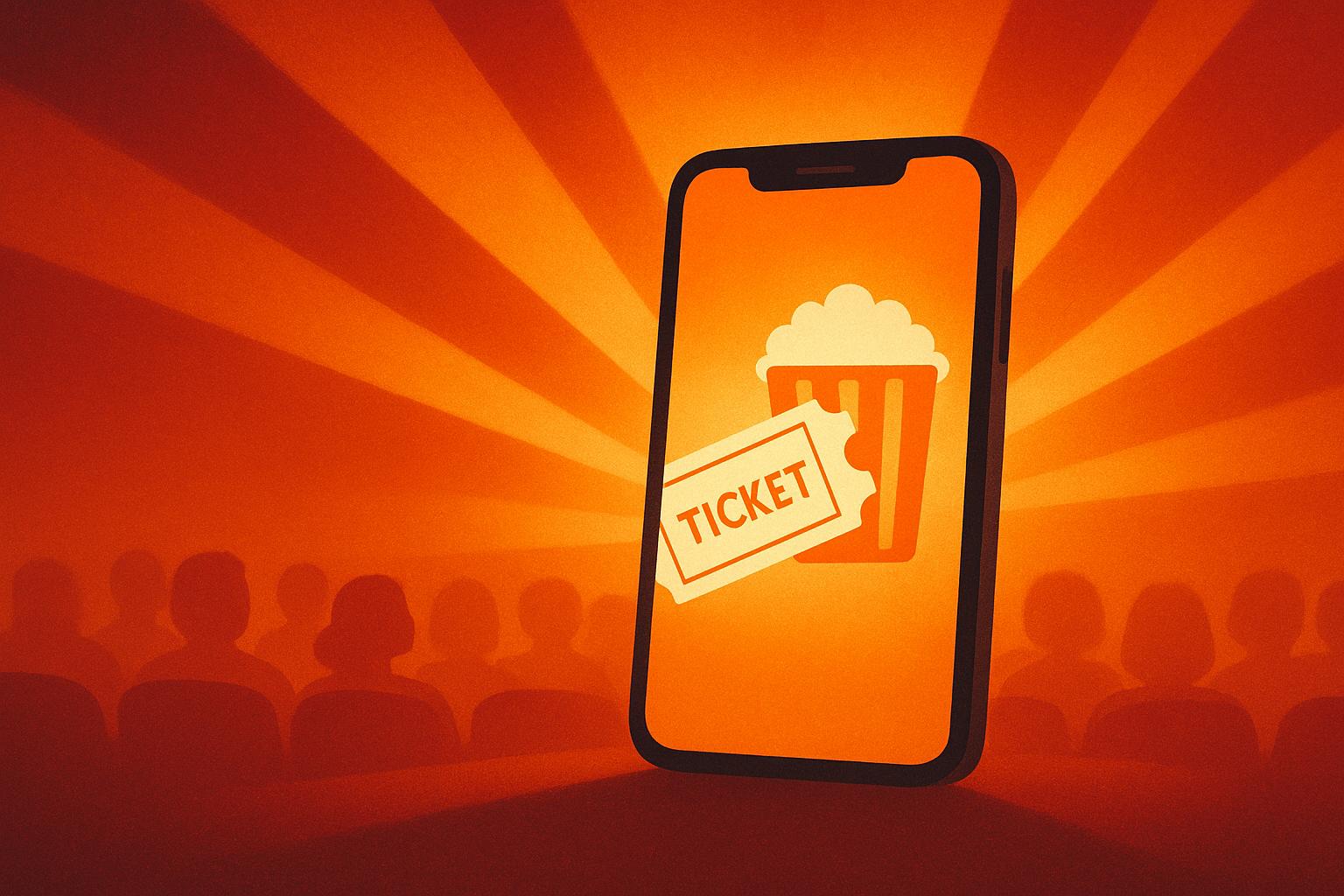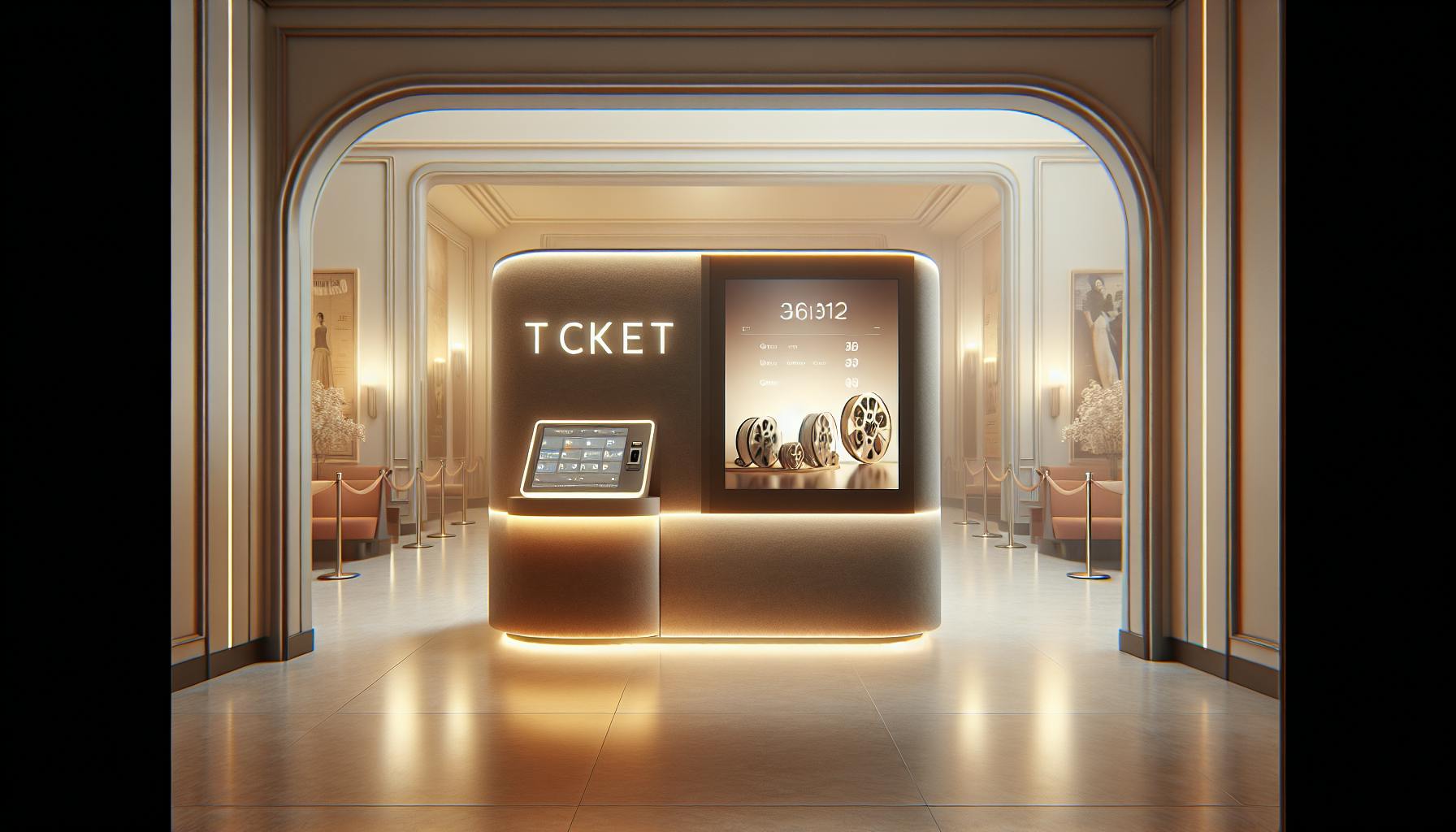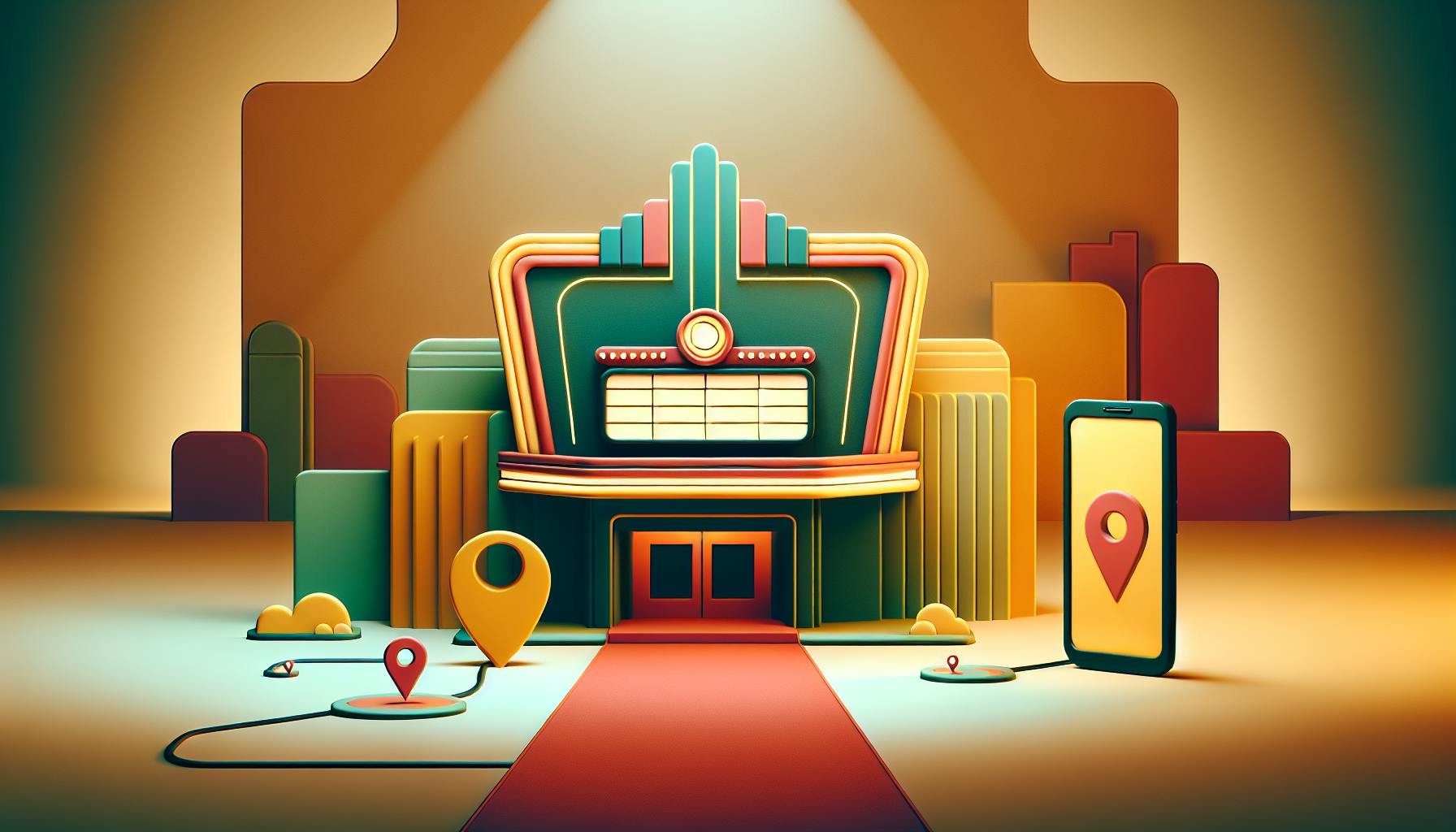Here's a concise summary of the key points from the cinema website UX redesign case study:
-
The old cinema website had issues with navigation, mobile experience, slow loading, a complicated booking process, and lack of personalization. This led to high bounce rates, low conversions, and poor user satisfaction.
-
The redesign process focused on understanding user needs through research, creating user personas, setting clear goals, and iteratively testing wireframes and prototypes with real users.
-
Key solutions included:
- Simplified navigation and information architecture
- Mobile-friendly responsive design
- Streamlined ticket booking flow
- Personalized movie recommendations
- Updated visual design and branding
-
After launching the new site, the cinema saw major improvements:
- 150% increase in average session duration
- 172% increase in conversion rate
- 61% increase in user satisfaction score
- 51% decrease in bounce rate
-
The case study highlights important lessons for UX design:
- Focus on understanding and designing for user needs
- Balance visual appeal with usability and functionality
- Continuously gather user feedback and iterate on the design
By putting users at the center of the redesign process, the cinema was able to dramatically enhance the website experience, leading to increased engagement, ticket sales, and customer satisfaction. This user-centric approach serves as a valuable model for other websites looking to optimize their UX design.
Related video from YouTube
The Old Website
The cinema website had many problems before the redesign. The site was hard to use and caused frustration for visitors.
User Feedback and Data
The team looked at user surveys and website data to understand the issues:
| Metric | Value |
|---|---|
| Bounce Rate | 65% |
| Average Time on Site | 1:30 |
| Conversion Rate | 2.5% |
| User Satisfaction Score | 2.8/5 |
Users complained about:
- "The site is hard to navigate, and I can never find what I'm looking for."
- "The site takes forever to load on my phone, and I usually give up."
- "The booking process is too long and complicated. I often abandon my purchase."
Areas for Improvement
Based on the feedback and data, the team identified these key issues:
-
Navigation: The site structure was confusing, making it hard for users to find information.
-
Mobile Experience: The site didn't work well on mobile devices, with poor responsiveness and readability.
-
Page Load Speed: Slow loading times caused users to leave the site quickly.
-
Booking Process: The ticket booking process had too many steps, leading to abandoned purchases.
-
Personalization: The site lacked personalized movie recommendations based on user preferences.
These problems formed the basis for the redesign strategy, which aimed to create a more user-friendly, engaging, and profitable cinema website.
The Redesign Process
The cinema website redesign followed a step-by-step approach to improve the user experience. The team used various tools and methods to identify issues, gather user feedback, and create a more user-friendly website.
Key Performance Goals
To measure the success of the redesign, the team set clear goals:
| KPI | Target |
|---|---|
| Conversion Rate | Increase from 2.5% to 5% |
| Average Time on Site | Increase from 1:30 to 3:00 |
| User Satisfaction Score | Improve from 2.8/5 to 4/5 |
| Bounce Rate | Reduce from 65% to 40% |
These goals helped evaluate the effectiveness of the redesign and ensure the new website met the desired objectives.
User Research and Personas
The team conducted research to understand the target audience's needs, preferences, and challenges. This research included:
- Surveys and interviews with existing customers
- Analysis of website data and user behavior
- Competitive analysis of other cinema websites
Based on the research, the team created user personas to guide the redesign process. These personas represented the key user groups and their specific goals and expectations when using the cinema website.
Wireframes and Prototypes
The wireframing and prototyping phase was crucial for testing and refining the new website's structure, layout, and functionality. The team followed these steps:
-
Low-fidelity wireframes: Sketched basic page layouts and navigation structure.
-
High-fidelity wireframes: Created detailed wireframes to define content hierarchy, UI elements, and interactions.
-
Interactive prototypes: Developed clickable prototypes to simulate the user flow and test usability.
-
User testing: Conducted usability tests with real users to gather feedback and identify areas for improvement.
This iterative process allowed the team to refine the design and ensure it met the needs and expectations of the target audience.
Visual Design and Branding
The visual design and branding elements were refreshed to create a more engaging and memorable user experience. The team focused on:
-
Color palette: Chose a vibrant and modern color scheme that aligned with the cinema's brand identity.
-
Typography: Selected a clean, legible, and contemporary font family for enhanced readability across devices.
-
Imagery: Incorporated high-quality images and videos showcasing the latest movies, promotions, and the cinema experience.
-
Iconography: Designed a custom set of icons to provide visual cues and enhance the overall aesthetics of the website.
The refreshed visual design and branding elements contributed to a more cohesive and immersive user experience, making the cinema website stand out from competitors and leaving a lasting impression on visitors.
Making the New Design Live
Putting the redesigned cinema website online involved several steps, including building the site, testing it with users, and launching it for the public. The team faced some challenges but found ways to overcome them and deliver a successful new website.
Building the New Site
The team used modern web technologies to build the redesigned site:
| Technology | Purpose |
|---|---|
| React.js | Building the front-end (what users see) |
| Node.js | Building the back-end (behind-the-scenes functionality) |
| MongoDB | Storing and managing data |
| AWS | Hosting the website on the cloud |
They connected the new site to the cinema's existing systems for ticketing and content management. This involved:
- Creating APIs (ways for different systems to talk to each other) for the ticketing platform.
- Setting up the content management system to update movie info and promotions on the site.
- Safely moving customer data and past transactions to the new system.
Testing with Users
Before launching, the team tested the new design thoroughly with real users to ensure it worked well. They:
- Watched users navigate the site and complete tasks like finding movies and buying tickets.
- Surveyed users to get their opinions on the design, ease of use, and overall satisfaction.
- Compared the new design's performance to the old website using A/B testing.
Based on user feedback, the team made improvements like:
- Simplifying the ticket purchase process with fewer steps and clearer instructions.
- Enhancing the search to provide better movie suggestions.
- Optimizing the site for smooth use on mobile devices.
Launching the New Site
To launch the redesigned website smoothly, the team:
- Tested how well the site could handle high traffic volumes.
- Checked the site's security measures to protect user data.
- Set up a backup system in case of any issues.
After the successful launch, the team closely monitored the site's performance using tools like:
- Google Analytics to track user behavior, traffic sources, and sales.
- Heatmaps to see where users clicked and interacted on pages.
- Error logs to identify and fix any technical problems reported by users.
Monitoring helped the team quickly address any issues and keep improving the redesigned cinema website for the best user experience.
sbb-itb-b1b0647
Impact of the New Design
The redesigned cinema website had a big positive effect on how users interacted with it, how many people bought tickets, and how satisfied customers were. The team used data and focused on the user experience, which led to clear improvements across key areas.
More User Engagement
The new design made users spend more time on the website and visit more pages:
| Metric | Before Redesign | After Redesign | Change |
|---|---|---|---|
| Average Session Duration | 1:30 | 3:45 | +150% |
| Pages per Session | 2.1 | 4.8 | +129% |
| Bounce Rate | 65% | 32% | -51% |
The simpler navigation, faster loading pages, and engaging content kept users exploring the site longer. They could easily find movies, check recommendations, and stay on the site.
Higher Ticket Sales
The redesign directly boosted the cinema's ticket sales and online bookings:
| Metric | Before Redesign | After Redesign | Change |
|---|---|---|---|
| Online Ticket Sales | $25,000/month | $62,500/month | +150% |
| Conversion Rate | 2.5% | 6.8% | +172% |
| Revenue per User | $1.50 | $4.25 | +183% |
The simpler booking process and better mobile experience made it easy for users to buy tickets, even on the go. User reviews and ratings also helped people make decisions, leading to more sales.
Example: For a big new movie's opening weekend, the new website processed over 10,000 ticket sales - double the previous record.
Happier Customers
Customers were much happier with the redesigned website:
| Metric | Before Redesign | After Redesign | Change |
|---|---|---|---|
| User Satisfaction Score | 2.8/5 | 4.5/5 | +61% |
| Net Promoter Score (NPS) | -5 | +45 | +50 points |
| Customer Support Tickets | 250/month | 80/month | -68% |
Users praised the intuitive design, fast performance, and personalized experience. Fewer support tickets showed people could find what they needed easily.
Customer quotes:
- "The new website makes finding movies and booking tickets so easy. I love the personal recommendations too." - Sarah, 28
- "Booking tickets online used to be a pain, but the new site makes it simple. It's fast, reliable, and works great on mobile." - Michael, 45
The redesign transformed how users experience the cinema website, making it enjoyable and hassle-free. The data-driven approach focused on real users paid off, setting a new standard for cinema websites.
Lessons and Best Practices
The cinema website redesign project taught the team valuable lessons and identified best practices that can help other websites improve their user experience.
Focus on Users
The redesign's success came from putting users first at every step. By researching users, creating user personas, and testing with real people, the team made sure the new design met user needs and expectations.
Key lessons:
- Learn about your users through surveys, interviews, and data analysis
- Create user personas to guide design decisions based on user goals
- Test with real users to validate the design and find areas to improve
- Keep gathering user feedback after launch to guide future updates
Focusing on users ensures websites create experiences that engage the audience, build loyalty, and drive conversions.
Balance Design and Function
A visually appealing website is important, but it must also be easy to use. The redesign balanced good looks with usability, ensuring the new design looked great and provided a smooth user experience.
Examples of balancing design and function:
| Design Element | Visual Appeal | Usability |
|---|---|---|
| Color Palette | Vibrant, modern colors matching the brand | High contrast for readability and clear visual hierarchy |
| Typography | Stylish, contemporary font family | Legible and easy to read on all devices |
| Navigation | Clean, uncluttered layout | Intuitive structure and clear labels for easy browsing |
| Booking Process | Visually engaging progress indicators and confirmation pages | Simplified steps and clear instructions for smooth checkout |
Considering both aesthetics and functionality creates experiences that are visually pleasing and efficient for users.
Keep Improving
Launching the redesigned website is not the end. To stay competitive and meet changing user expectations, the team must keep improving the user experience.
Recommendations for ongoing optimization:
-
Monitor user behavior and feedback: Use analytics and surveys to track how users interact with the site and gather their opinions.
-
Test regularly with users: Test new features and design changes with users to ensure they meet their needs.
-
Stay up-to-date with trends: Keep an eye on new technologies, design patterns, and best practices in the cinema and e-commerce industries.
-
Use data to guide decisions: Use data insights to optimize the user experience based on real user behavior and preferences.
Treating the website as an evolving entity and continuously refining the user experience helps websites stay ahead and provide lasting value to customers.
The cinema website redesign offers valuable lessons and best practices for improving online user experiences. By focusing on users, balancing design and function, and embracing continuous improvement, websites can create engaging, efficient, and memorable experiences that drive business success.
Summary
The cinema website redesign case study shows how focusing on users can improve an online platform. The redesign team looked at how people used the old website and what problems they had. Then they made changes to fix those issues and create a better user experience.
The key steps in the redesign process were:
-
User Research: The team talked to users, looked at data on how people used the site, and made "user personas" to understand the target audience.
-
Iterative Design: They created wireframes (basic layouts) and prototypes (working models) of the new design. Real users tested these and gave feedback to improve the design.
-
Visual Design: They updated the website's look with a new color scheme, fonts, images, and icons to make it more visually appealing and on-brand.
-
Performance Optimization: They made the site faster, mobile-friendly, and streamlined processes like ticket booking to make it easier to use.
After the redesign, the website saw big improvements:
| Metric | Before Redesign | After Redesign | Change |
|---|---|---|---|
| Conversion Rate (% of visitors who bought tickets) | 2.5% | 6.8% | +172% |
| Average Time on Site | 1:30 | 3:45 | +150% |
| User Satisfaction Score | 2.8/5 | 4.5/5 | +61% |
| Bounce Rate (% who left after one page) | 65% | 32% | -51% |
The new design made users stay longer, visit more pages, and buy more tickets. They were happier with the easy-to-use site and personalized experience.
The case study shows that investing in user experience design pays off. By understanding users, testing with them, and making the site user-friendly, the cinema website increased sales, user engagement, and customer satisfaction.
Other websites can learn from this example. Putting users first, using data to guide decisions, and continuously improving the design can create great online experiences that benefit both users and businesses.
FAQs
How can movie theaters improve?
Movie theaters can improve the viewing experience by:
| Area | Improvement |
|---|---|
| Sound & Picture Quality | Using the latest projection and audio systems |
| Seating | Offering comfortable seats with plenty of legroom |
| Food & Beverage | Providing a variety of high-quality snack and drink options |
| Events & Programming | Hosting special screenings and events to attract audiences |
Upgrading these core aspects can give moviegoers a better overall experience.
What is the goal of redesigning a website's user experience?
The main goal of redesigning a website's user experience (UX) is to create an experience centered around the user's needs, goals, and preferences. This involves:
- Making the website easy and enjoyable to use
- Exceeding user expectations for a smooth interaction
- Leaving a positive impression that encourages repeat visits
By focusing on the user, a UX redesign aims to improve the website and drive more engagement.
How do I redesign a website as a UX designer?
As a UX designer, here are the key steps to redesign a website:
- Understand the website's goals and the target audience
- Analyze the current website's performance and user data
- Set clear objectives for the redesign
- Define user personas and their needs
- Prepare and optimize content for the new design
- Create wireframes and prototypes to test with users
- Design the visuals and branding elements
- Build the redesigned website using web technologies
- Test thoroughly with real users and gather feedback
- Launch the new website and monitor its performance
- Continuously gather user insights and make improvements
- Stay updated on web design trends and best practices
Following this process helps ensure a successful redesign that meets user and business needs.
What do you learn in UI/UX design?
To become a skilled UI/UX designer, you should develop:
- Visual design skills and an eye for aesthetics
- Understanding of how people interact with digital products
- Knowledge of web design principles and trends
- Proficiency in design tools like Sketch, Figma, or Adobe XD
- Ability to conduct user research and testing
- Skills in creating wireframes, prototypes, and user flows
- Collaboration and communication skills for working in teams
While coding is not essential, some knowledge of HTML, CSS, and JavaScript can be helpful when working with developers.
Why is UX design important for web development?
UX design is crucial for web development because it:
- Ensures the website meets the needs and expectations of users
- Improves user engagement, retention, and loyalty
- Increases conversions and helps achieve business goals
- Sets the website apart from competitors by providing a better experience
By prioritizing UX, web designers and developers can create websites that not only look good but also function smoothly and provide a positive experience for users.


